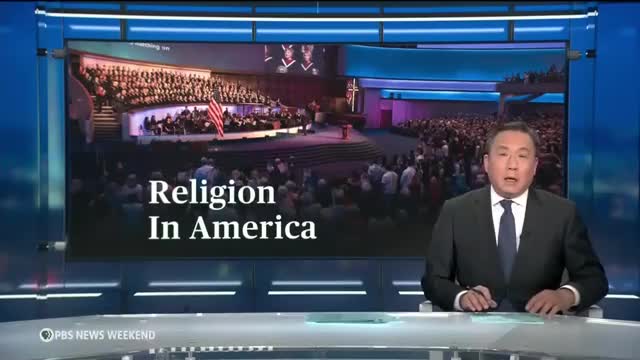Mega churches face crisis amid changing religious landscape
This article was created by AI summarizing key points discussed. AI makes mistakes, so for full details and context, please refer to the video of the full meeting. Please report any errors so we can fix them. Report an error »

As the landscape of organized religion shifts in the United States, megachurches—defined as Christian congregations with 2,000 or more worshippers—are navigating both growth and scrutiny. Despite a general decline in religious affiliation among Americans, these large congregations continue to attract nearly 7 million attendees on average, thanks to their extensive programs and engaging worship experiences.
However, recent high-profile resignations of pastors Tony Evans and Robert Morris have cast a shadow over the megachurch movement. Evans cited unspecified sins in his resignation, while Morris admitted to past sexual abuse, raising questions about accountability and misconduct within these influential institutions. Scott Thoma, a sociology of religion professor, noted that the visibility of megachurches amplifies any misconduct, making it more prominent than in smaller congregations.
Financially, megachurches operate on a scale akin to corporations, with average annual budgets exceeding $5 million and staffing levels reaching up to 200. This blend of business and spirituality presents unique challenges, prompting many to adopt professional standards and oversight measures to enhance accountability.
Approximately 40% of megachurches are non-denominational, which complicates governance and accountability structures. Without a national denomination to oversee them, these churches often rely on internal boards selected by pastors, raising concerns about transparency and oversight.
Despite their appeal, particularly among younger and more diverse congregations, megachurches face a broader trend of disconnection from organized religion. Many younger individuals are seeking alternative spiritual paths, influenced by negative perceptions of traditional churches, particularly regarding issues like LGBTQ+ rights and gender equality.
As megachurches continue to grow, they must address these challenges while navigating the changing cultural landscape of faith in America.
However, recent high-profile resignations of pastors Tony Evans and Robert Morris have cast a shadow over the megachurch movement. Evans cited unspecified sins in his resignation, while Morris admitted to past sexual abuse, raising questions about accountability and misconduct within these influential institutions. Scott Thoma, a sociology of religion professor, noted that the visibility of megachurches amplifies any misconduct, making it more prominent than in smaller congregations.
Financially, megachurches operate on a scale akin to corporations, with average annual budgets exceeding $5 million and staffing levels reaching up to 200. This blend of business and spirituality presents unique challenges, prompting many to adopt professional standards and oversight measures to enhance accountability.
Approximately 40% of megachurches are non-denominational, which complicates governance and accountability structures. Without a national denomination to oversee them, these churches often rely on internal boards selected by pastors, raising concerns about transparency and oversight.
Despite their appeal, particularly among younger and more diverse congregations, megachurches face a broader trend of disconnection from organized religion. Many younger individuals are seeking alternative spiritual paths, influenced by negative perceptions of traditional churches, particularly regarding issues like LGBTQ+ rights and gender equality.
As megachurches continue to grow, they must address these challenges while navigating the changing cultural landscape of faith in America.
View full meeting
This article is based on a recent meeting—watch the full video and explore the complete transcript for deeper insights into the discussion.
View full meeting